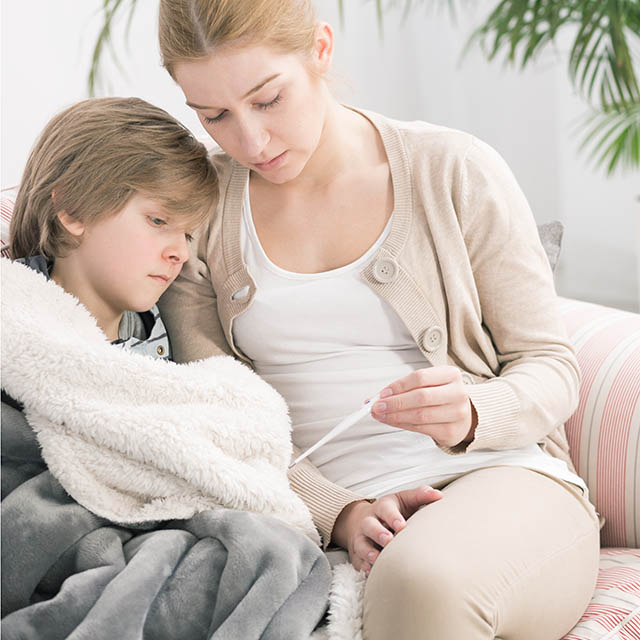Beyond the runny nose: Know these causes and treatments for sinus infections.
Almost every parent knows what it’s like to have a child with a stuffy, runny nose. Sinus infections are the reason for many doctor visits and a frequent concern for parents. Here are some frequently asked questions about sinus infections in kids:
Is frequent drainage from my child’s nose a symptom of a sinus infection?
The most common causes for nasal drainage are allergies, viral infections and blockage of the nose’s normal drainage. If your child has thin, clear drainage then it is most likely caused by something other than an infection. Sinus infections are characterized by fever and thick, discolored drainage, lasting more than seven to 10 days.
What causes sinusitis?
Sinusitis happens when drainage gets trapped in the nose and allows bacteria to grow. Blockage of the nose can come from swelling of the lining of the nose — usually from allergies — or enlarged adenoids. Some children with certain medical problems, such as weak immune systems or cystic fibrosis, are at very high risk for sinus infections.
What tests will my child need?
In most cases of sinus infections, a child doesn’t need any special tests besides an exam from his primary-care provider. If the child has very frequent infections, infections that don’t get better with treatment or ones that spread to areas outside of the sinus, your provider may recommend routine blood counts and tests to look at immune levels. If there are polyps in your child’s nose, the provider may also test for cystic fibrosis. In many difficult-to-treat cases, a CT scan of the sinus may identify specific problems. This quick test requires the child to lay flat on a table for about five minutes; in older children, this is often accomplished without sedation.
How are sinus infections medically treated in children?
If discolored nasal drainage sticks around for more than seven to 10 days, the child is treated with a course of antibiotics. Children who have frequent sinus infections (more than four to six per year) may need a “nasal hygiene” routine, which includes decreasing swelling in the nose with a nasal spray and washing out trapped drainage with a saline rinse. If your child is prescribed a nasal hygiene regimen, it’s important to stick with it daily. This simple regimen can help most children avoid surgery.
Medical therapy didn’t work. What are the next steps?
If medical therapy didn’t work, you pediatrician will likely refer you to an ear, nose and throat surgeon (otolaryngologist). In children, adenoids are believed to be a big contributor to chronic sinusitis in children. Adenoids can block normal nasal drainage, but also can hang onto low-grade infections, despite antibiotics. It is believed that about two-thirds of otherwise healthy children with recurrent sinus infections will get better with adenoid removal alone.
In some children, the doctor may recommend surgery for the sinuses themselves. There are several surgical options, including minimally invasive balloon techniques. Not every surgery is right for every child with sinus disease, and your surgeon will help you understand what makes the most sense given your child’s individual history and test results.
This post was written by Siva Chinnadurai, an Associate Professor of Otolaryngology at Monroe Carrell Jr. Children’s Hospital at Vanderbilt. A St. Louis native, he came to Vanderbilt from the Mayo Clinic and enjoys traveling with his family and woodworking.


Vanderbilt’s Children’s After-Hours Clinics offer the convenience of a walk-in clinic with care provided by a board-certified pediatrician from Children’s Hospital. No appointment is necessary, but we recommend calling your pediatrician first. Learn more about services and find locations for Children’s Hospital After Hours Clinic locations.

